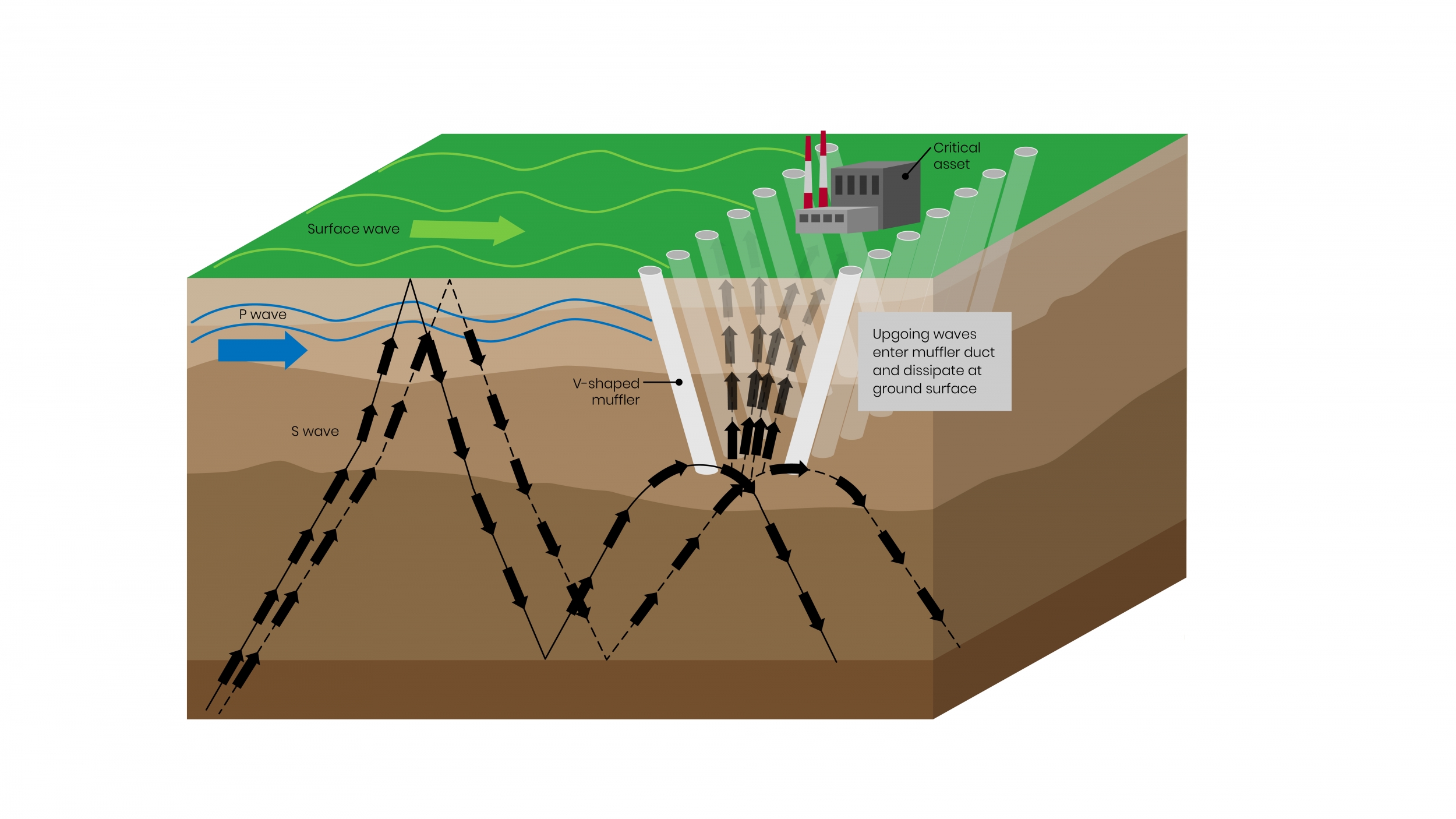New technology aims to make infrastructure invisible to earthquakes
On October 17, 1989, at 5:04 p.m., the Loma Prieta earthquake struck the San Francisco Bay Area. Even though much of the infrastructure in the area was built to be earthquake resistant, the magnitude 6.9 quake still killed 63 people and caused nearly $6 billion in damages. But what would happen if a similar earthquake were to occur somewhere without earthquake resistant infrastructure; for instance, in Seattle where the United States Geological Survey predicts a major earthquake is likely to occur within 30 years? Retrofitting individual buildings is expensive and impractical on a large scale, and there is no way for some critical resources (such as airfields or oil pipelines) to be retrofitted. What can be done to protect lives and infrastructure?
Enter Robert Haupt and Vladimir Liberman. The two Lincoln Laboratory researchers are the principal investigators on a developing project called Seismic-Cloaking Protection of Critical Infrastructure (SCPCI), which involves boring a series of tilted holes into the ground surrounding whatever structure needs to be protected — from a single building, to critical infrastructure, or even to an entire city. Although the technology is still in the early stages of development, it has the potential to protect billions of dollars' worth of infrastructure and save thousands of lives.
Once drilled, the holes turn the ground around them into an effective medium that reflects and diverts dangerous seismic surface waves away from the protected region. The borehole array is designed to act as a seismic muffler, similar to the way a muffler in a car dampens sound waves. The array significantly dissipates seismic waves that travel up from below and significantly reduces the ground motion experienced in the protected region of the muffler. "We tried one line of boreholes, and it didn't work very well," Haupt said. "Just a single line by itself was not effective since there was seismic communication between the holes, but a block of them was [effective in dampening seismic waves]." The boreholes range from a foot to a meter in diameter and are each around 150 meters deep. In models and laboratory tests, SCPCI was able to reduce the seismic energy of a magnitude 7 earthquake to that of a magnitude 5, a reduction in energy by a factor of 1000. To put that in perspective, an earthquake that might normally destroy buildings or liquefy the underlying ground and trigger landslides could be reduced enough to only rattle dishes in cabinets.

Although SCPCI still has to undergo field testing, a similar idea was tested in Mimizan, France, in 2016. A collaborative team of scientists from around the United States and Europe proved that a forest was capable of dispersing the energy from a small, high-frequency (higher than an earthquake) seismic wave generated by a controlled seismic source. Each tree absorbed a small amount of seismic energy and vibrated, dispersing that energy out into the air. However, to effectively absorb and dissipate the seismic energy of an actual earthquake, cities and critical infrastructure would have to be surrounded by forests, with trees that would "be more like Eiffel Towers, since the seismic wave frequency is very low and has a wavelength on the order of a kilometer," Liberman said. This solution has some obvious practical stumbling blocks — such as the decades or centuries it would take to grow forests of that height — which SCPCI hopes to circumvent.
Field testing, however, has proven challenging. Although computer modeling and laboratory experiments can give Liberman and Haupt a pretty good idea of the way that the seismic energy would dampen and disperse, it's difficult to put trust in a technology yet to prove itself in the field. Implementing it around a structure could cost anywhere from tens of millions of dollars up to half a billion dollars, depending on the size of the structure. Haupt is also looking for a place to test SCPCI; one promising candidate is Cushing, Oklahoma, a major crossroads for U.S. oil pipelines and strategic reserves. As a result of wastewater reinjection practices used in oil production, Cushing experiences earthquake swarms averaging three a day, while quake magnitudes have been increasing from rattling dishes in cabinets to cracking building foundations and causing structural damage. The Department of Homeland Security (DHS) is exceptionally worried about a combined economic and environmental disaster.
Liberman and Haupt's ultimate goal isn't to be out in the field boring holes, though. "Our objective really is to make a software design package that others would use to design these sorts of [configurations], using our expertise," Haupt said. Several groups, including the State of California, the State of Oklahoma, and the Army Corps of Engineers, have expressed interest in such software, which has been featured in the media.
If a high-magnitude earthquake were to hit Cushing, Oklahoma, today, it would, in Haupt's words, bring the oil industry in the United States to its knees and have devastating consequences both environmentally and economically. With the implementation of the SCPCI technology, it could mean just a few broken windows.